Wanderlust and the love of a great green chile cheeseburger drive Cheryl Alters Jamison and her husband and cookbook-writing partner, Bill. Literally, drive them. All over the state (and, sometimes, the world).
 On Feb. 13, Jamison spoke to a packed crowd in the History Museum Auditorium, regaling them with tales of some of New Mexico’s oldest and most beloved family-owned restaurants. Her lecture, “Still Cooking: New Mexico’s Historic Diners, Chile Joints, and Burger Bars,” dovetailed with her work for the state Tourism Department on two fronts: A catalog of the state’s culinary treasures and another of the best green chile cheeseburgers from Lordsburg to Dulce, Portales to Gallup.
On Feb. 13, Jamison spoke to a packed crowd in the History Museum Auditorium, regaling them with tales of some of New Mexico’s oldest and most beloved family-owned restaurants. Her lecture, “Still Cooking: New Mexico’s Historic Diners, Chile Joints, and Burger Bars,” dovetailed with her work for the state Tourism Department on two fronts: A catalog of the state’s culinary treasures and another of the best green chile cheeseburgers from Lordsburg to Dulce, Portales to Gallup.
We can’t give you a chile joint-by-chile joint account of her lecture (really, you had to be there), but wanted to share a few of her highlights. To borrow Jamison’s words: “Are you ready? We’re going to hit the road.”
It’s All Greek to Us
Trust an ancient culture with a mouth-watering culinary tradition to set up shop in New Mexico. Some of the state’s oldest and most renowned eateries have been brought to us by Greek immigrants. And a few might surprise you.
Those tummy-warming breakfast burritos at Tia Sophia’s in Santa Fe? The full-blown New Mexico chile dream that is Tomasita’s? The luscious steaks at Santa Fe’s Bull Ring and Albuquerque’s Monte Carlo Steakhouse and the Western View Steakhouse and Coffee Shop?
Greek, Greek, Greek.
As she began researching her upcoming book, Tasting New Mexico: 100 Years of New Mexican Cooking (Museum of New Mexico Press, 2012), Jamison said she kept stumbling across names like Mariol and Razatos. “I thought it was interesting,” she said.
After the turn of the last century, the first Greek restaurant appeared in Albuquerque, Mecca. By 1917, the city could count seven Greek cafes, including the Court Cafe and Liberty Cafe.
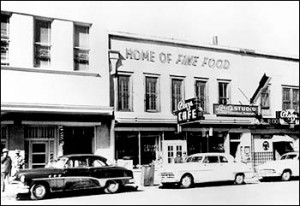 In 1929, Jim and Spiros Ipiotis turned the Eagle Cafe (estd. 1918) on the Santa Fe Plaza into the Plaza Cafe. Dionysis (Danny) Razatos bought it in 1947, but it took until the 1980s for his sons to convince him to add Greek food to the menu. (The restaurant suffered a serious fire recently and is closed for renovations, but the Razatos brothers run the Cowden Cafe sandwich shop in the History Museum, and a relative runs the Plaza Cafe Southside in Santa Fe.)
In 1929, Jim and Spiros Ipiotis turned the Eagle Cafe (estd. 1918) on the Santa Fe Plaza into the Plaza Cafe. Dionysis (Danny) Razatos bought it in 1947, but it took until the 1980s for his sons to convince him to add Greek food to the menu. (The restaurant suffered a serious fire recently and is closed for renovations, but the Razatos brothers run the Cowden Cafe sandwich shop in the History Museum, and a relative runs the Plaza Cafe Southside in Santa Fe.)
In the 1930s, Jim Pappas, an immigrant who raised sheep and made cheese and possibly moonshine, opened Pappas Sweet Shop in Raton. Still there, its rooms boast a museum’s worth of collectibles and the intoxicating aroma of fresh-baked bread.
A veritable network of Santa Fe’s favorite dining places actually began in Albuquerque’s Atrisco neighborhood, when a young Greek widow, Sophia Mariol, opened the Central Café to support her four children – each of whom eventually opened restaurants in Santa Fe. They had Mariol’s Cafe on the site that now boasts Cafe Pasqual’s. Son Jim opened Tia Sophia’s. One day, daughter Georgia Mariol stumbled onto a little-visited restaurant called Tomasita’s, then on Hickox. (The site later became Dave’s and, still later, Dave’s Not Here, because, well, Dave left.)
Tomasita’s chile was so good that it reminded Georgia of eating in her neighbors’ kitchens in Atrisco. She bought the café by assuming the debt and, it turns out, by assuming Tomasita Leyba, the cook. She moved it to a bigger location in a then-rundown part of Santa Fe known as the railyard. These days, expect to wait up to an hour for a table, but the crowd will keep you entertained.
A Few Hidden Gems
Sometimes the best food is where you least expect it. A few of Jamison’s discoveries:
Johnnie’s Cash Store in Santa Fe. On Camino Don Miguel off of Canyon Road, Johnnie’s expects you to pay for your sundries by cash or check – and to pick up one of the self-service tamales and enjoy it at a picnic table outside. How good is it? Good enough to win accolades from the Washington Post, which wrote:
Johnnie’s mixes soup, cereal, detergent, pet food — and a few baseball trophies from his sons’ youthful triumphs — in a few aisles of low, unglamorous shelves. The main draw sits near an old-time cash register, in the spot most convenience stores reserve for endlessly spinning wieners. “TAMALES,” the hand-drawn sign on a well-worn aluminum warmer shouts out, tempting customers who have dropped by for water or gum to reconsider their restaurant reservations.
They should. Even in New Mexico, where tamales are ubiquitous — and the bar for them is as high as the elevation above sea level (7,000 feet, for anyone who’s counting) — the husk-wrapped packets of pleasure at Johnnie’s stand out as ideals.
“It’s the last of a dying breed,” Jamison said of Johnnie’s Cash Store. “If you haven’t been there, get there while Johnnie’s is still with us.”
El Paragua in Española. Started in 1958 as little more than a drive-up taco stand, El Paragua now serves fine Mexican food in an impressive and rustic stone building – once the tack rooms of a family home. (Ask to see the photo of a young Dustin Hoffman, fresh off of filming The Graduate, when he ate there.)
Leona’s Restaurante in Chimayo. All Leona Medina-Tiede intended to do was offer food to Easter pilgrims to El Santuario de Chimayo. Thirty-four years later, her restaurant is still on the small side (think outdoor picnic tables and don’t bother with a reservation) but beloved by those who appreciate succulent carne adovada, hand-held burritos, posole, chile stew, frito pies, nachos and biscochitos.
Hit the Road
Besides sharing some of the more delicious portions of New Mexico’s history, Jamison’s lecture had an ulterior motive: To entice the audience (and, by extention, you, dear reader) to begin your own culinary wanderings. The Tourism Department’s web sites, linked above, are a great place to start.
Take the scenic drive to the historic Dust Bowl community of Pie Town and sample the Kathy Knapp’s pecan-oat pie at the Pie-O-Neer Cafe. (“A little slice of heaven,” Jamison said.)
Wander over to Clovis and Portales, where the Taco Box restaurants have served as the “Hometown Tacotorium” since 1969. While in Clovis, check out the Foxy Drive In and imagine the days when Buddy Holly and the Crickets took a break there.
In La Mesa, you simply must eat at Chope’s, which has, Jamison said, “the best chile rellenos in the state.”
And then there’s the hippies-meet-bikers Ancient Way Cafe in Ramah; the Laguna Superete, where your 20- minute wait will be rewarded with an extraordinary green chile cheeseburger (or a Kool-Aid Pickle. Don’t ask.); and Lucky Boy Chinese Food and Hamburgers in Albuquerque.
“Yes, you have to see it to believe it,” Jamison said of Lucky Boy. “It’s the only place in New Mexico, and I would wager anywhere, that you can get a green chile cheeseburger with an egg foo yung patty on top of it.
“My husband says it’s pretty good.”

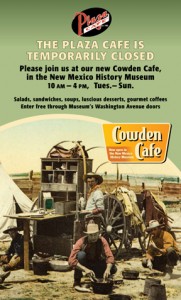 Andy and Daniel Razatos, owners of the
Andy and Daniel Razatos, owners of the 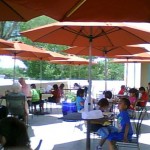 The best part is that you can then enjoy them on the second-floor cafe’s outdoor terrace overlooking the Palace of the Governors Courtyard and the rooftops of downtown Santa Fe.
The best part is that you can then enjoy them on the second-floor cafe’s outdoor terrace overlooking the Palace of the Governors Courtyard and the rooftops of downtown Santa Fe.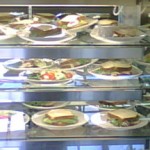
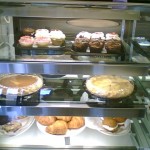
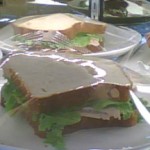
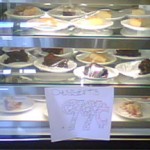
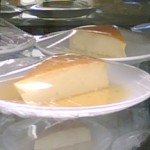
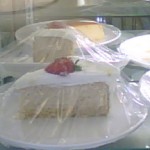
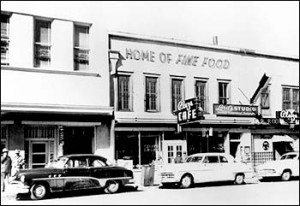 The
The 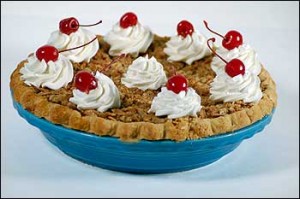 “The Cowden Café will be like a little café bistro,” said Daniel Razatos. “You come in for a little snack, nothing’s very huge or expensive, and it’s a nice, comfortable atmosphere to hang out and read your newspaper – very European.”
“The Cowden Café will be like a little café bistro,” said Daniel Razatos. “You come in for a little snack, nothing’s very huge or expensive, and it’s a nice, comfortable atmosphere to hang out and read your newspaper – very European.”